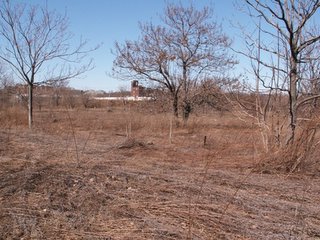I had booked us two spots in a guided hike up to the top of Tijuca Peak. Guided hikes can be a lot of fun as hikes, but they are not often great for herping, since the group tends to want to keep moving rather than stop every twenty feet to look under logs. So while I was excited for the hike and for the beautiful views of Rio, finding herps was going to be a question of incidental sightings rather than intentional finds.
The Tijuca forest and park (some of the area is national forest, some is national park) date from 19th century. The land was originally used to grow coffee and sugar, but in mid-1800s the government decided to let it grow back as forest to protect Rio de Janeiro’s water supply. The result is a remarkably large and wild chunk of Mata Atlantica (Atlantic coastal forest) right next to a city of six million people.
The views were beautiful, as expected. The weather was cool and damp, but it stayed nice enough to take some good pictures even with the crappy, backup, disposable cameras. Here I am at a waterfall relatively low down in the park.
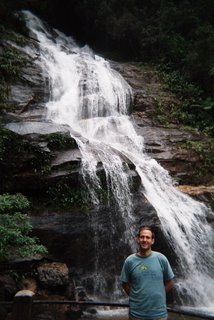
Here we are at the “Vista Chinesa.”

Last, here are some pictures of us ascending and then standing around the top of the peak. The dense forest gives way to low trees and then bushes and large tussocks of grass at the top.

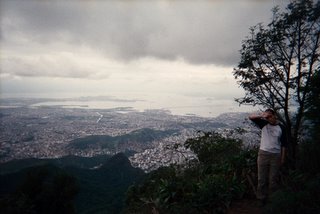
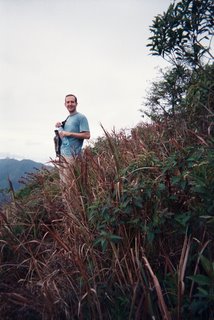
We actually did spot some critters, or rather Jen spotted three and I saw the tail of one snake. They were all at the top of the peak, where we were graced by the only sunbeams that made it through the clouds during our entire stay in Rio.
Jen pointed out the first one, what looked like another Tropidurus torquatus, and then a skink basking on top of a large grass tussock (I love that word). I tried to get a photo of it, and this is what came out. I am pretty sure it is some species of Mabuya.
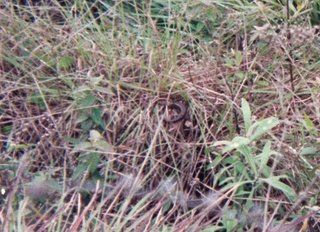
I had grilled our guide on the way up about the snakes he had seen, and they seemed to fall into two categories: a few species of pit vipers (Bothrops species) and something he said is called the cobra cipó, Portuguese for “air root snake." The first group are all venomous, some quite dangerously so. The latter, a long, thin, green snake, did not sound scary.
I saw the green tail of something slipping away into a heap of grass and I hesitated. I can’t remember if I was close enough to leap to grab it, but I did not. I have to guess at what I saw slip away, and I’m guessing it was the cobra cipó (Chironius bicarinatus), a fast, diurnal snake that is sort of a South American version of our racers and whipsnakes (Coluber and Masticophis species). Here is a link to a Portuguese-language web page about the cobra cipó: http://www.saudeanimal.com.br/cobra_cipo.htm
It feels kind of sad to finish the last post about my honeymoon. I had such high hopes, and we ended up finding so little. To write the final chapter feels like forgetting about even the aspirations; I’m shelving a fantasy. I don’t know if we’ll make it back to Brazil. We certainly intend to visit the Amazon some day, and the Pantanal still looks really attractive, but Bolivia makes a little more sense to me since I speak Spanish and know the country from having spent a couple months there back in 2000.


